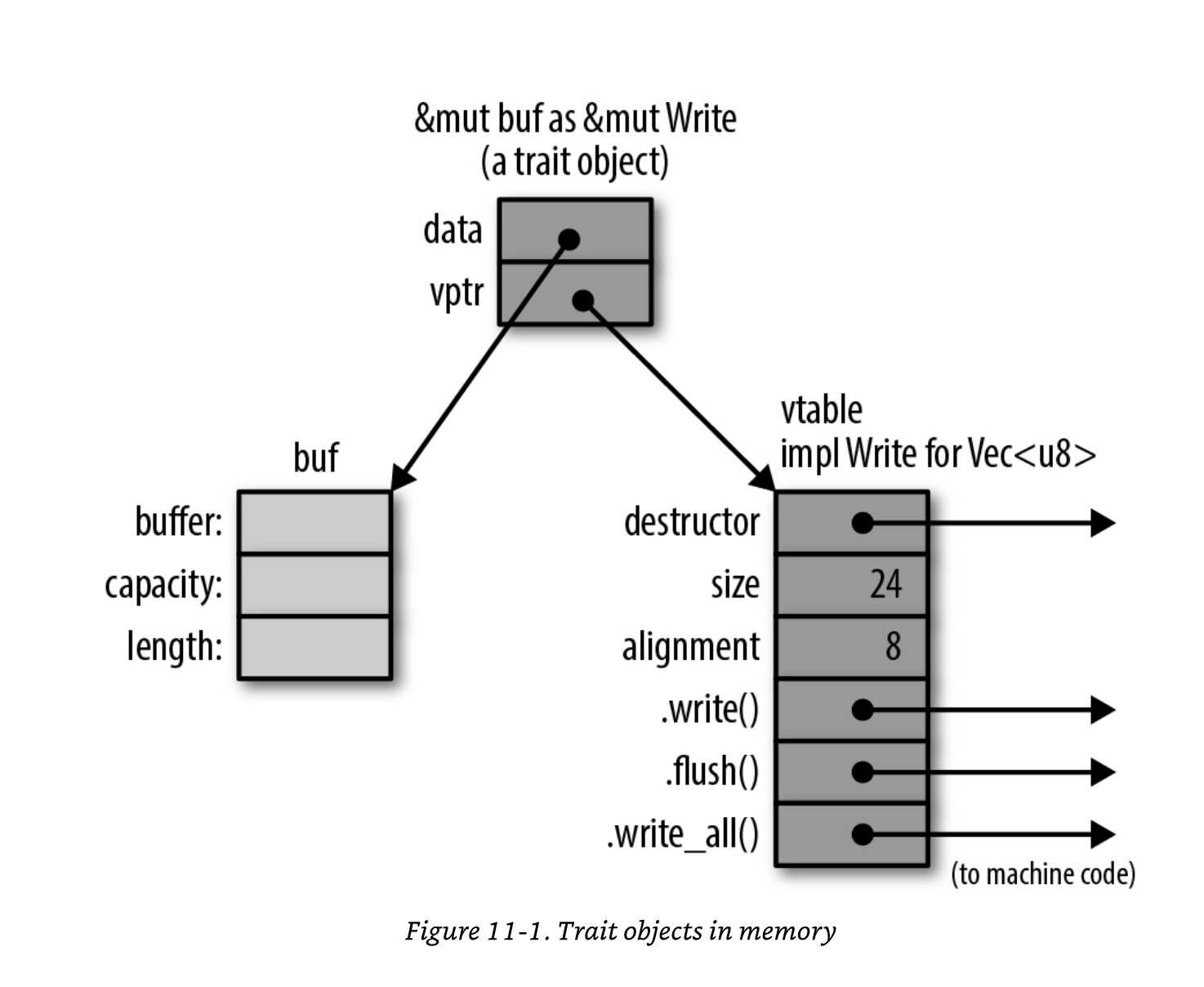Fat & Thin Pointer
Thin pointer
- A thin pointer only contains the memory address it points to.
#![allow(unused)] fn main() { let a = 10; let ra = &a; println!("{:p}", &a); println!("{:p}", ra); assert_eq!(format!("{:p}", &a), format!("{:p}", ra)); let rra = &ra; println!("{:p}", &ra); println!("{:p}", rra); assert_eq!(format!("{:p}", &ra), format!("{:p}", rra)); }
Fat pointer
A fat pointer contains both the address of a memory location it points to and additional metadata like the length of the allocation or a pointer to vtable in Trait Object.
&[T], &mut [T], &str are fat pointers
A reference to a slice [T] or str is a fat pointer, carrying the starting address of the slice and its length. [T] and str are dynamically sized types and that's the reason we see them as &[T], &mut [T] and &str.
The representation of &[T], &mut [T], &str might look like below:
#![allow(unused)] fn main() { struct SliceRef { ptr : *const i32 len : usize } }
#![allow(unused)] fn main() { let arr : [i32; 5] = [1, 2, 3, 4, 5]; let slice_arr : &[i32] = &arr[..3]; println!("{slice_arr:?}"); println!("{:p}", &arr); println!("{:p}", slice_arr); assert_eq!(format!("{:p}", &arr), format!("{:p}", slice_arr)); println!("{}", std::mem::size_of::<i32>()); // 4 bytes println!("{}", std::mem::size_of::<[i32; 5]>()); // 4 * 5 = 20 bytes // size of the pointer pointing to value of type [i32; 5] println!("{}", std::mem::size_of::<&[i32; 5]>()); // 8 bytes // &[i32] is a fat pointer println!("{}", std::mem::size_of::<&[i32]>()); // 16 bytes // &str is a fat pointer println!("{}", std::mem::size_of::<&str>()); // 16 bytes }
Trait Object is a fat pointer
A reference to a trait type is called a trait object. A Trait Object consists of a pointer to the value, plus a pointer to a table representing that value's type.
#![allow(unused)] fn main() { let mut buf = Vec::new(); let writer : &mut dyn std::io::Write = &mut buf; println!("{}", std::mem::size_of::<Vec<i32>>()); // 24 bytes - buffer, capacity, length println!("{}", std::mem::size_of::<Vec<String>>()); // 24 bytes bytes - buffer, capacity, length println!("{}", std::mem::size_of::<&dyn std::io::Write>()); // 16 bytes }
